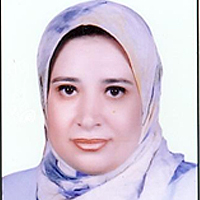Achievement of cure following allogeneic HSCT with Flu-Bu regimen in a patient with severe mycosis fungoides and Sezary Syndrome
Published on: 6th December, 2019
OCLC Number/Unique Identifier: 8465488841
Experience with allogeneic hematopoietic stem cell transplantation (HSCT) in mycosis fungoides/Sezary syndrome (MF/SS) is limited to a small number of case reports and case series [1,2]. The advantage of allogeneic HSCT has been indicated in progressive disease in the review of CIBMTR study groups [3]. A consensus is still not available about the intensity and the content of the conditioning regimen due to the rarity of the disease and heterogeneous patient groups.
Scraping cytology and scanning electron microscopy in diagnosis and therapy of corneal ulcer by mycobacterium infection
Published on: 6th December, 2019
OCLC Number/Unique Identifier: 8440619538
Purpose: This work is aimed at demonstrating that scraping cytology and scanning electron microscopy can successfully assist in the diagnosis of nontuberculous mycobacteria infection. For this purpose, we report the use of both these techniques in the diagnosis of cornel ulcer in a previously healthy young man.
Methods: Cytological samples were achieved by scraping technique on the mucosa, both sub palpebral and temporal area of the eye tarsal conjunctiva. The obtained sample was affixed to a sanded rectangular slide, stained with the Pappenheim method, washed in bidistilled water, treated in Giemsa solution, washed again and subsequently dried on a hot plate and observed with a microscope at various magnifications.
Results: After a therapy based on a 500 mg clarithromycin tablet administered every 12 hours for 30 days as systemic therapy, a complete recovery of the patient from left eye inflammation was observed and SEM cytology showed that NTM colonies had disappeared.
Conclusion: Conjunctival cytology scraping and SEM technologies can be therefore exploited as new tools in diagnosis and fast identification of these newly discovered mycobacteria. In fact, they have a new way for studying ocular pathology, because of the simple execution and remarkable accuracy in the diagnosis. In fact, this technique allows to gather valuable information about all pathogens expression and the cellular action involved in pathology. As a further plus, this technique provides clinicians with the opportunity to repeat the SEM cytology for monitoring patients during therapy, hence leading to evaluate the efficacy of the pharmaceutical regimen in real time.
Foley catheter balloon tamponade as a method of controlling iatrogenic pulmonary artery bleeding in redo thoracic surgery
Published on: 20th November, 2019
OCLC Number/Unique Identifier: 9269426092
Background: Pulmonary artery bleeding secondary to iatrogenic injury is a troublesome intraoperative complication. The likelihood of encountering this complication is significantly higher in redo surgery for a number of reasons, including distortion of anatomical structures, adhesions and loss of tissue planes. Significant blood loss, although rare, remains a concern, and can occasionally be life-threatening. When significant bleeding from the pulmonary artery occurs, it can be a challenging situation to manage.
Case Report: A 65 year old female was undergoing redo thoracic surgery in the setting of a completion lobectomy for biopsy-proven primary adenocarcinoma of the lung. Iatrogenic injury to the pulmonary artery resulted in significant bleeding that could not be managed by gaining proximal control due to dense adhesions. The novel decision to utilize a Foley catheter for balloon tamponade was taken, in order to provide sufficient haemostasis for definitive surgical repair of the defect to be undertaken
Conclusion: The increased technical difficulties of redo thoracic surgery are well recognised. We describe the first case of Foley catheter balloon tamponade being utilized in the context of iatrogenic pulmonary artery bleeding during thoracic surgery.
Treatment of autoimmune hemolytic anemia with erythropoietin: A case report
Published on: 20th November, 2019
OCLC Number/Unique Identifier: 9269420484
In this article, we describe the case of a fifty-year-old patient with autoimmune hemolytic anemia (AIHA) with constitutional symptoms, jaundice, unquantified fever and progressive dyspnea. The patient had history of smoking and Hepatitis A and following a physical exam she was found in a regular condition, icteric but with no other further signs. Her laboratory tests revealed hemolytic anemia with a hemoglobin of 8.5 g/dL, an increase of total and indirect bilirubin, an elevated ferritin, a decreased transferrin and haptoglobin and a positive result for direct Coomb’s test. Considering this, an immune profile was ordered finding a negative result of ANAs and ENAs and a decrease of complement C3 and C4. The patient was diagnosed with AIHA and as an initial step a corticosteroid treatment was administrated however the patient showed no clinical nor chemical improvement. At her third day of hospitalization, she was unstable hemodynamically requiring transfer to Intensive Care Unit (ICU) to optimize management. After 24 hours on ICU, due to persistence of deterioration of the patient, it was decided to manage with erythropoietin (EPO). In the following days, the patient showed a rise in her hemoglobin and an overall improvement made possible the transfer to hospitalization service. The AIHA is an uncommon disease and is not the first option that comes to mind with these symptoms, currently there are not controlled studies to the treatment due to its complexity and the heterogeneity of the results. We strongly support the use of EPO in refractory cases of this pathology.
Impact of COVID-19 outbreak on urology practice in India
Published on: 18th June, 2021
OCLC Number/Unique Identifier: 9124848007
Background: The rapid spread of “Coronavirus Disease 2019’ (COVID-19) caused by Severe Acute Respiratory Syndrome Coronavirus-type 2 (SARS-CoV-2) significantly impacted health care facilities all across the globe. To assess impact on urology practice in our country, we developed a questionnaire based on relevant questions in current scenario for information regarding challenges and changes urologists were facing in their practices.
Material and methods: We conducted an online survey to find out the impact of COVID-19 on urology practice in Indian scenario. The questionnaire comprised of total 18 questions, which were relevant to day to day practice.
Results: Total 310 urologists across the India participated and consented to being part of the study. The majority admits change in their practice due to the recent COVID-19 outbreak. The majority admitted to attend fixed numbers of patients per day with prior appointment and to keep detailed records. The majority responded in positive that attendees will not be allowed, opted to wear N-95 mask in OPD, opted to take the relevant history, opted for thermal screening, opted for patients to wear a mask before entering OPD room, opted for using the new prescription at new visit and opted to avoid physical examination unless very necessary. The majority wanted to take consent from the patients that they may get infected by COVID-19 in the hospital and agreed on performing COVID-19 testing for every patient posted for surgery. The majority agreed to assign a separate operation theatre to operate patients with positive COVID-19 test and also preferred open surgery over minimal invasive surgery.
Conclusion: Our survey revealed that the recent pandemic led to significant impacts on urology practice in our country. The urologists working in different setups are facing different challenges in this difficult condition. They have made certain changes in their practice to safely provide effective care to their patients.
Patellar fractures in children
Published on: 19th November, 2019
OCLC Number/Unique Identifier: 9269418298
We describe a rare case of patellar fracture in a seven year old girl. The case was reviewed for various aspects such as clinical diagnosis, imaging tests and most suitable treatment.
Intestinal malrotation presenting with midgut volvulus in an adult
Published on: 16th October, 2019
OCLC Number/Unique Identifier: 8303639939
A 36-year-old man without previous medical history presented to the emergency department with abdominal pain and vomiting of acute onset. His vital signs were stable and he had no fever. Abdominal exploration revealed distention with pain at palpation. Laboratory tests were normal. Abdominal X-Ray showed gastric and small intestine distention. A nasogastric tube was placed and fluid therapy started. Computed tomography showed an intestinal malrotation, without the duodenum crossing the midline and with the colic frame arranged in the left hemiabdomen (Figure 1), complicated with a midgut volvulus as demonstrated by the whirlpool sign (Figure 2, arrow).
Bilateral transient osteoporosis of the hip with unilateral fracture in a 40 years old pregnant woman
Published on: 2nd April, 2021
OCLC Number/Unique Identifier: 8998601789
Purpose: Some physiological events in women’s life such as pregnancy and lactation can be associated to a condition known as Transient Osteoporosis of the Hip (TOH); if not promptly diagnosed it can lead to significant consequences such as femoral neck fracture. In this paper we describe a case of bilateral TOH, focusing on the importance of early treatment and how it influenced the outcome.
Methods: A 40 years old post-delivery woman came to our attention for hip pain and a left femoral neck fracture was diagnosed. Magnetic resonance (MRI) showed bilateral edema of the femoral head. She underwent total hip replacement on the left side; toe-touch weight bearing and pharmacological therapy were prescribed for the right hip.
Results: MRI at nine months showed complete regression of the femoral head and neck edema; the patient was clinically asymptomatic.
Conclusion: If not promptly diagnosed and treated, TOH can potentially evolve in fracture. Many therapeutic strategies have been suggested since now; we believe that avoiding weight bearing on the involved hip as early as possible is the key to recovery.
Fatal agranulocytosis associated with Metamizole treatment in a 16-year-old girl
Published on: 2nd October, 2019
OCLC Number/Unique Identifier: 8286573110
Agranulocytosis is one of the common reasons of consultation in hematology. It’s life-threatening because of an infection risk. The metamizole is a drug, known for its potential rare danger of inducing a severe agranulocytosis. However, it remains widely used because of its beneficial effect analgesic and antipyretic. We report in this study, a case of a girl who was 16 years old, referred for severe agranulocytosis, and appeared two weeks after treatment with Novalgin. The clinico-biological symptoms were dominated by Streptococcal septicemia with an infectious pulmonary and digestive focus. The blood cell count confirmed a severe agranulocytosis with total disappearance of neutrophils. Despite broad-spectrum antibiotic therapy and stimulation with hematopoietic growth factor, the clinical evolution was fatal in the short term. What motivates us to add this case to those of the literature in order to remind practitioners about the danger of this drug, and to promote has doubled of vigilance during use.
Automatic heartbeat monitoring system
Published on: 30th September, 2019
OCLC Number/Unique Identifier: 8286584056
The proliferation and popularity of open source hardware and software, such as Arduino and Raspberry PI, together with IoT and Embedded System, has brought the health industry to rapid evolution, creating portable and low-cost medical devices for monitoring vital signals. Electrocardiographic (ECG) equipment plays a vital role for diagnosis of cardiac disease. However, the cost of this equipment is huge and the operation is too much complex which cannot offer better services to a large population in developing countries. In this paper, I have designed and implemented a low cost fully portable ECG monitoring system using android smartphone and Arduino. The results obtained by the device were tested comparing them with those obtained from a traditional ECG used in clinical practice on 70 people, in resting and under-activity conditions. The values of beats per minute (BPM), ECG waveform and ECG parameters were identical, and presented a sensitivity of 97.8% and a specificity of 78.52%.




